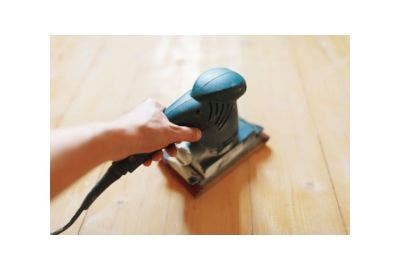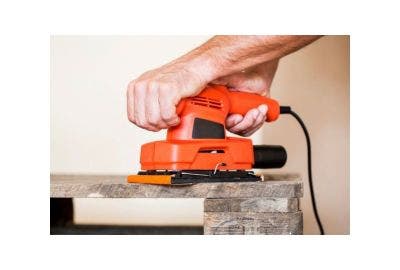Learning how to hang a door is not just an essential skill for DIY enthusiasts, handymen, and tradespeople, but also a transformative project that can rejuvenate any living space.
While hanging external and internal doors share a common foundation, the nuances between them highlight the versatility required in door hanging.
Armed with the correct door-hanging tools and comprehensive guidance, this skill is within reach for anyone eager to enhance their home.
This practical guide aims to demystify the process, ensuring you're well-equipped to tackle this task with confidence.
The Tools You’ll Need
Door Installation Kit
Before embarking on the task of door installation, a meticulous initial assessment of the doorway is crucial.
Ensuring the doorway is square, level, and structurally sound lays the foundation for a successful project.
Choosing the right door size and type is paramount, directly influencing the cost to hang a door.
Additionally, when contemplating how to hang an internal door, considerations diverge for external doors, with factors such as weather resistance and insulation coming into play.
Door Level
Ensuring a door hangs correctly hinges on using a level to achieve perfect vertical alignment and swing.
The debate between traditional spirit levels and modern laser levels centres on precision; while spirit level is a tried and tested, laser levels offer unparalleled accuracy.
This guide provides essential tips for using either tool effectively, ensuring DIY enthusiasts, handymen, and tradespeople can achieve a professional finish, making the door alignment process smoother and more efficient.
Screwdrivers and Fastening Tools
Securing a door demands essential tools like screwdrivers, fasteners, and power drills for efficiency.
Choosing quality fasteners suited to the door's material ensures durability. Manual screwdrivers provide precision, whereas electric tools save time and effort, ideal for bulk installations.
This guide equips DIYers and tradespeople with tips for using both manual and electric tools effectively for optimal door installation.
Chisels and Woodworking Tools
Chisels are vital for fine-tuning door installations, crafting hinge mortises, and adjusting doors with minimal damage.
Mastery of chiselling techniques and sharp tools ensures precision and safety.
Measuring and Marking Equipment
Using measuring tools like tape measures and carpenter's squares, are crucial for door installation.
Precise marking for hinges and trimming ensures a perfect fit.
This guide emphasises double-checking measurements to prevent errors, providing DIYers and tradespeople a basis for flawless door hanging and minimising costly mistakes for seamless installation.
Shims and Spacers
Shims and spacers play a crucial role in achieving a perfectly level and plumb door installation.
Aimed at DIY enthusiasts, handymen, and tradespeople, it underscores the importance of precision in using shims and spacers to ensure a seamless and professional door installation.
Step 1: Assessing Your Door Installation
A thorough assessment of the doorway's squareness, level, and integrity is essential.
Choosing the correct door size and type ensures a snug fit, with weather resistance and an insulation key for external or internal doors.
Step 2: Gathering Essential Tools and Materials
Starting a door-hanging project requires a detailed toolkit checklist, crucial for DIY enthusiasts aiming for success.
Emphasising the need for quality tools for a smoother installation and better outcomes is key.
Organising your workspace for easy access to tools and materials enhances efficiency, setting the stage for a proficient door installation.
Step 3: Preparing the Doorframe
Preparing the door frame by cleaning, repairing damages, and adjusting for fit is essential for a smooth installation.
Removing old doors and hardware is crucial and having a clean, level frame provides a foundation for successful door hanging for a seamless installation and smooth operation.
Step 4: Mounting the Door Hinges
For hinge mortises, mark and measure accurately on both door and frame, then cut precisely.
Choose hinges that match the door's weight and frequency of use.
To prevent sagging, ensure hinges are evenly spaced and securely fastened, providing a stable and smooth operation.
Step 5: Fitting and Installing the Door
Properly position the door within the frame to ensure balance and alignment. Attach the door using hinges for smooth operation.
If the door sticks or gaps appear, adjust the hinges or plane the door edges for a perfect fit.
Step 6: Adjusting for Proper Alignment
To fine-tune door alignment, use shims and adjust hinge positions for uniform spacing, ensuring smooth opening and closing.
Regularly check the door's balance and adjust as necessary to address common issues like sticking or uneven gaps, achieving a perfectly aligned door.
Step 7: Adding Hardware and Finishing
Install door hardware, ensuring handles, locks, and doorstops are both functional and complement the door's aesthetics.
Apply finishing touches like painting or staining for a professional look.
Regular maintenance, including tightening screws and lubricating hinges, will keep the door functioning smoothly over time.
Troubleshooting Tips for Door Hanging
Here are some troubleshooting tips for door-hanging issues:
1. Uneven Gaps
- Check if the door is level using a spirit level. If it's not, adjust the hinge screws accordingly until the door is level.
- Ensure that the hinges are properly installed and aligned. Sometimes, uneven gaps can occur if the hinges are not positioned correctly.
- If the uneven gap persists, consider adding shims behind the hinges to adjust the door's position.
2. Sticking Doors
- Inspect the top and bottom edges of the door for any signs of rubbing against the frame or threshold. If there are any rough spots, sand them down until the door moves smoothly.
- Check if the hinges are tightened properly. Loose hinges can cause the door to sag and rub against the frame.
- Lubricate the hinges and latch mechanism with a silicone-based lubricant to ensure smooth operation.
3. Misaligned Hardware
- Ensure that the door latch aligns properly with the strike plate on the door frame. If it doesn't, adjust the position of the strike plate until the latch engages smoothly.
- Verify that the hinges are securely attached to both the door and the frame. Loose screws can cause misalignment issues.
- If the hardware is visibly damaged or worn out, consider replacing it with new hardware to ensure proper alignment.
General Tips
- Take your time during the installation process and double-check your work at each step to avoid common mistakes.
- Use the appropriate tools, such as a screwdriver, hammer and level, to ensure accurate adjustments.
- Don't hesitate to seek help from a professional if you encounter difficulty troubleshooting the issues on your own.
- Keep the door's warranty and installation instructions handy for reference, as they may provide additional guidance specific to your door model.
Remember, patience and attention to detail are key when troubleshooting door-hanging issues. Taking the time to address these problems properly will ensure that your door functions smoothly and looks aesthetically pleasing.
While DIYers often have basic tools, door hanging may necessitate additional equipment. Heamar offers a comprehensive range of high-quality tools and accessories for door installation projects.























